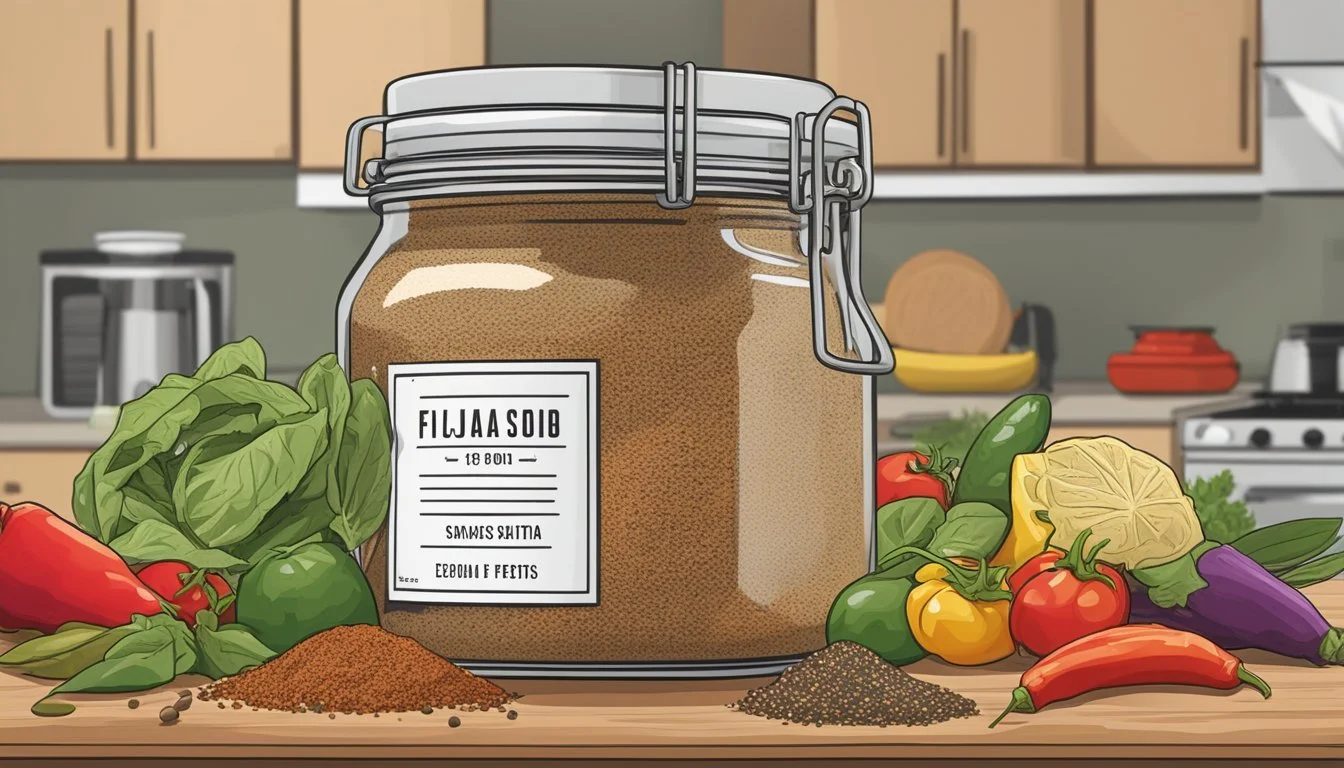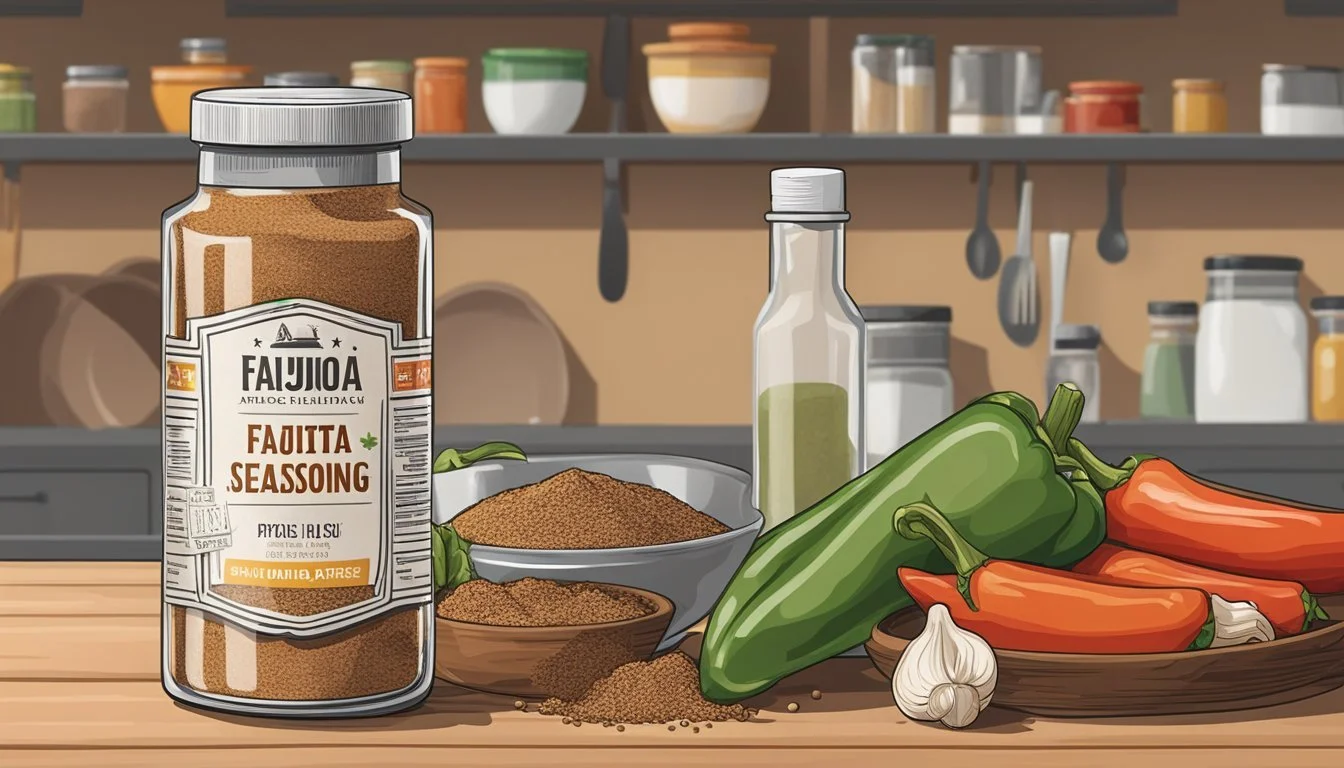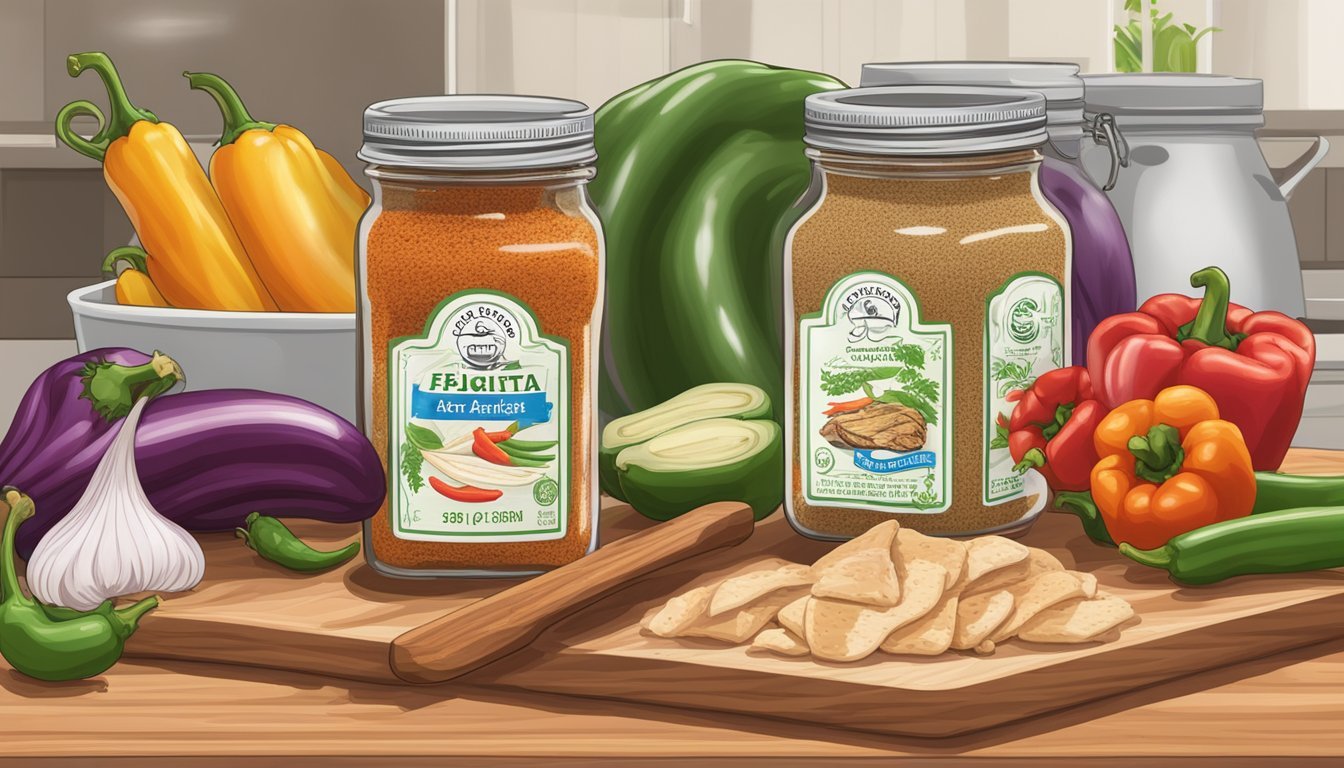Does Fajita Seasoning Expire?
Shelf Life and Storage Tips
Fajita seasoning brings a burst of flavors to meals, but many wonder about its shelf life. While both homemade and store-bought fajita seasoning can last up to 6 months if stored properly, store-bought options sometimes extend that timeframe to a year. The key is maintaining freshness by keeping the seasoning in an airtight container in a cool, dry place.
Spices like chili powder, cumin, paprika, garlic, and onion powder, typically found in fajita seasoning, can degrade over time. As these spices lose potency, the blend's flavor intensity diminishes. Relying on fresh, high-quality ingredients ensures your fajita seasoning remains flavorful for as long as possible.
Homemade mixes offer the advantage of tailoring spice levels to personal taste. When preparing a large batch, always check the expiration dates of individual spices. Storing the mix correctly guarantees that each meal will have the vibrant taste that fajitas are known for.
Understanding Fajita Seasoning
Fajita seasoning is a versatile spice blend essential for creating flavorful fajitas. It's available in both homemade and store-bought versions, with each having unique characteristics and applications.
What Is Fajita Seasoning?
Fajita seasoning is a blend of spices designed to add flavor to various fajita dishes. It typically includes a mix of smoky, spicy, and earthy spices. This seasoning is used to marinate meats and vegetables, enhancing their taste during cooking.
Common Ingredients in Fajita Seasoning
The primary ingredients in fajita seasoning are chili powder, paprika, cumin, and garlic powder. These foundational spices provide the bulk of the flavor.
Chili Powder: Adds heat and depth.
Paprika: Provides a sweet and smoky note.
Cumin: Gives an earthy, aromatic quality.
Garlic Powder: Enhances the overall taste profile.
Onion powder, cayenne pepper, oregano, sugar, and sometimes a pinch of salt are also included to balance and round out the flavors. These ingredients ensure that the seasoning covers a wide range of taste notes, from spicy to sweet.
Homemade vs. Store-Bought Fajita Seasoning
Homemade fajita seasoning allows customization of spice levels and ingredients. This option is often preferred by those who like to control the freshness and purity of their seasoning, avoiding additives and preservatives commonly found in store-bought versions.
Store-bought packets are convenient but might contain preservatives and fillers to extend shelf life. They offer a consistent flavor but lack the adjustability of homemade recipes. Homemade mixes, if stored properly in an airtight container, retain potency for up to 6 months and offer flexibility in flavor adjustments. Store-bought versions also have a similar shelf life but may vary slightly depending on the brand.
Using either homemade or store-bought seasoning, it enhances the flavor of meats like chicken, steak, or shrimp and can also be used as an alternative to taco seasoning for a different taste profile.
Shelf Life and Expiration of Fajita Seasoning
Fajita seasoning has a shelf life that varies depending on whether it is store-bought or homemade. Proper storage methods can help extend its usability while also maintaining its quality.
Does Fajita Seasoning Expire?
Yes, fajita seasoning does expire. Store-bought fajita seasoning typically has an expiration date that ranges around 6 months to a year. Homemade fajita seasoning also lasts around 6 months if stored appropriately. Over time, the potency and flavor of the spices can diminish, making the seasoning less effective.
Expired seasoning is not harmful but will lack its original flavor strength. Adhering to expiration dates ensures the best tasting results. Using an airtight container for storage further assists in preserving its freshness.
Identifying Signs of Spoilage
Detecting spoilage in fajita seasoning primarily involves judging its sensory characteristics. Color changes, such as fading or darkening, may indicate loss of potency. The aroma should be robust and spicy; a weakened or stale smell suggests the seasoning is past its prime.
Texture changes like clumping indicate moisture exposure, which can lead to spoilage. Also, insects or foreign particles in the seasoning are clear indicators of contamination and spoilage.
Proper Storage Methods
Maintaining the freshness of fajita seasoning requires proper storage practices. Keeping the seasoning in an airtight container ensures minimal exposure to air, preserving its flavor and potency. Store the container in a cool, dry place like a pantry to prevent moisture and heat from degrading the spices.
Avoid direct sunlight as light can degrade the quality. For homemade blends, labeling the container with the preparation date helps keep track of its shelf life and optimal usage period. Also, it's beneficial to use high-quality spices to extend the seasoning's effective use span.
Adhering to these storage tips will maximize the life and quality of your fajita seasoning mix.
Cooking with Fajita Seasoning
Fajita seasoning is a versatile blend that enhances the taste of various dishes and can be used in numerous ways. It is commonly used for marinades, adjusting the heat and spice levels, and making traditional fajitas with chicken, steak, or shrimp.
Enhancing Flavors in Different Dishes
Fajita seasoning can elevate flavors beyond just fajitas. It's an excellent addition to grilled meats, such as beef or pork, providing a smoky and spicy undertone. Adding it to vegetables like bell peppers and onions during the cooking process ensures a rich, savory taste.
For tofu and shrimp dishes, fajita seasoning adds a subtle heat and aroma, making them more enjoyable. Combining this seasoning with lime juice and oil can also bring out intricate flavors in various Tex-Mex cuisine.
Fajitas: A Versatile Dish
Cooking fajitas, whether chicken, steak, or shrimp, is a delightful way to use this seasoning. The smokiness of the paprika and cumin combined with the freshness of ingredients like cilantro and lime juice makes for a delectable dish. Chicken fajitas, steak fajitas, and shrimp fajitas each bring their own unique taste profiles.
Key Ingredients for Fajitas:
Proteins: Chicken, steak, shrimp
Vegetables: Bell peppers, onions
Seasoning Mixture: Fajita seasoning, lime juice, oil
This mix adds a complex and rich flavor, enhancing the overall dining experience.
Fajita Seasoning in Marinades
Incorporating fajita seasoning into marinades is an excellent way to infuse flavors into meats and vegetables. A simple marinade might include oil, lime juice, and the seasoning blend. This mixture not only adds taste but also tenderizes the meat, making it juicier.
For beef, pork, or chicken, marinating for about 5 minutes can significantly boost the flavor. Using dried herbs like oregano adds depth, while ingredients like brown sugar bring a hint of sweetness. Fajita seasoning marinades are well-suited for grilling, providing smoky notes that complement the natural flavors.
Adjusting Heat and Spice Levels
One of the benefits of using fajita seasoning is the ability to tailor the heat and spice to individual preferences. For those who enjoy a spicier kick, adding more cayenne or chili powder can increase the heat level. On the other hand, reducing these spices can mellow out the flavor for a milder dish.
For a balanced taste, adding a mix of both sweet and spicy elements, like brown sugar and smoked paprika, can create a complex profile. Depending on the dish, extra lime juice or fresh cilantro can be added for freshness and a slight tang.
Health and Nutrition Considerations
Fajita seasoning can have various impacts on health, depending on its ingredients and individual dietary needs. Key factors include nutritional content and potential allergens or dietary restrictions.
Understanding Nutritional Content
Fajita seasoning typically contains a mix of spices such as chili powder, cayenne, cumin, paprika, garlic, and onion powder. These spices are low in calories and contribute minimal fat, protein, or carbohydrates. However, some store-bought varieties may include sugar and salt.
For those monitoring sodium intake, it's crucial to check labels. Homemade fajita seasoning allows better control over salt and other ingredients, which is beneficial for managing sodium consumption and limiting added sugar.
In terms of vitamins and minerals, spices like paprika and cumin provide small amounts of vitamin A, vitamin C, and iron. While the quantity per serving is not substantial, they contribute to a balanced diet.
Dietary Restrictions and Allergies
Individuals with dietary restrictions should carefully review fajita seasoning ingredients. Many commercial seasonings are gluten-free, but it’s important to verify because cross-contamination can occur. Use of gluten-free labeling ensures safety for those with celiac disease or gluten sensitivity.
Additionally, some seasonings may contain anti-caking agents, which can be a concern for those avoiding certain additives. Homemade versions avoid these by using simple, whole spices.
Garlic and onion powder are common ingredients and can trigger sensitivities in some people. Those following a low-FODMAP diet should be wary of these components.
By tailoring ingredients to specific dietary needs or preferences, homemade fajita seasoning can be a safe and nutritious option for many individuals.
Making Homemade Fajita Seasoning
Creating homemade fajita seasoning allows for a controlled blend of spices and the ability to tailor flavor to personal tastes. It can be made from common pantry items and stored easily for future use.
Simple Homemade Recipe
For a simple, effective fajita seasoning, combine the following ingredients:
2 tbsp chili powder
1 tbsp ground cumin
1 tbsp smoked paprika
1 tbsp cornstarch
2 tsp garlic powder
2 tsp onion powder
1 tsp ground coriander
1 tsp salt
1 tsp pepper
1/2 tsp cayenne pepper
Gather all spices and mix in a bowl until evenly combined. Transfer the mixture to an airtight container, ensuring it is dry before storage, and keep it in a cool, dark place. This blend can season up to 8 batches of fajitas, equivalent to one pound of meat each.
Customizing Your Seasoning Blend
One of the benefits of making your own fajita seasoning is the ability to customize it to fit personal preferences. Adjust the heat by varying the amount of cayenne pepper or chili powder. Add minced dried garlic or substitute with garlic salt for a different flavor profile.
For those who prefer a slight hint of sweetness, a pinch of sugar can be included. Other variations can incorporate spices like marjoram or more smoked paprika for a deeper, smoky flavor.
Experiment with different proportions until the perfect blend is achieved. Homemade seasoning not only enhances your dishes but also ensures you avoid unnecessary additives found in store-bought mixes.
Creative Uses Beyond Fajitas
Fajita seasoning can be a versatile addition to your kitchen, adding a burst of flavor to a variety of dishes. This section explores how you can use fajita seasoning in different cuisines, snacks, salads, soups, and stews.
Versatility in Various Cuisines
Fajita seasoning, with its blend of smoky, tangy, and spicy flavors, can enhance a wide range of dishes beyond traditional fajitas.
In Mexican cuisine, it works well with tacos and burritos, adding depth and zest. It can also elevate grilled meats like pork or chicken, providing a quick and easy way to add robust flavor.
In other cuisines, such as Cajun, fajita seasoning can be mixed with olive oil and red pepper flakes to create a bold marinade for shrimp or tofu. The seasoning complements both meat and vegetarian dishes, making it a flexible ingredient in various culinary traditions.
Seasoning for Snacks and Salads
Fajita seasoning can transform everyday snacks and salads into flavorful delights.
Sprinkle it on popcorn for a savory twist, or mix it with nuts for a spicy snack mix. For a healthier option, toss it with fresh veggies and olive oil before roasting them in the oven. The seasoning not only adds a kick but also highlights the natural flavors of the vegetables.
In salads, fajita seasoning can be used to spice up dressings. Combine it with oil, vinegar, and a touch of water to create a vibrant dressing that pairs well with greens and grilled vegetables. It's an easy way to bring a new dimension to salads, making them more exciting and flavorful.
Fajita Seasoning in Soups and Stews
Adding fajita seasoning to soups and stews can infuse them with a rich, smoky flavor.
It pairs particularly well with hearty soups containing beans, vegetables, and meats. A dash of fajita seasoning can enhance chicken tortilla soup, adding complexity and a slight heat. In stews, it blends beautifully with traditional ingredients, such as tomatoes and peppers, enriching the overall flavor profile.
For a quick and easy meal, sauté chopped veg with fajita seasoning before adding them to a pot of broth. This method ensures the seasoning is evenly distributed, bringing consistency and depth to every spoonful.







